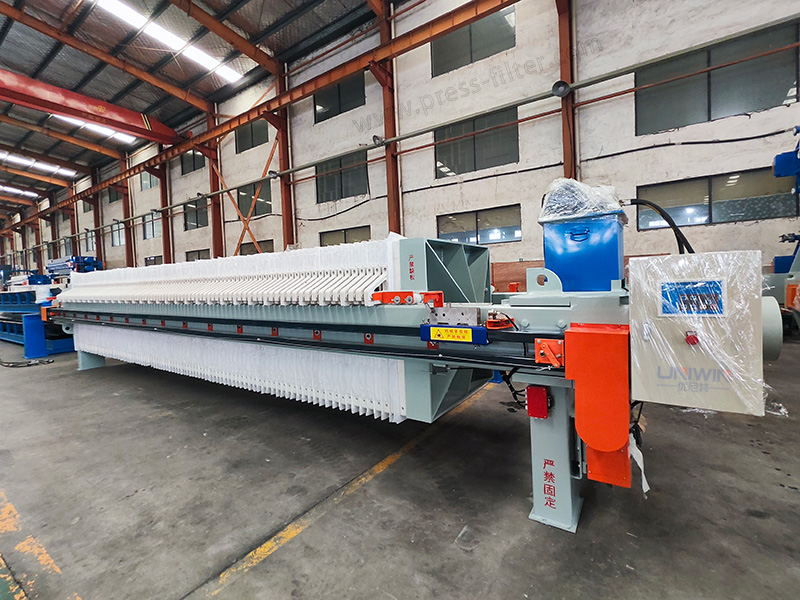Commonly Used Accessories for Filter Presses
A filter press is a machine composed of many parts. In addition to processing some main components, it also needs the support of some accessories. The following are some commonly used accessories for filter presses.
Filter Plate Handle
The filter plate handle, also referred to as filter plate ears or wings, is a crucial component mounted on both sides of the filter plate, integral to its structure. It enhances the stability by increasing the support points where the filter plate rests on the beam. Additionally, it influences the depth design of the filter plate and facilitates its movement. This accessory is lightweight, resistant to corrosion and wear, and boasts a durable lifespan.
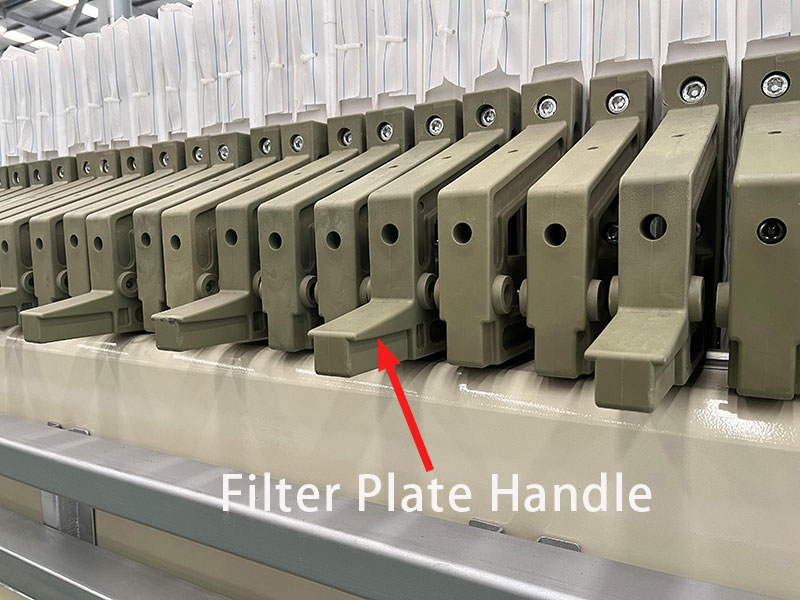
The filter plate handle is usually made of corrosion-resistant and high-strength materials, such as stainless steel or high-strength plastic, to cope with humid and sometimes corrosive working environments. The handle needs to have sufficient structural strength to withstand the tension and pressure during repeated operations to ensure safety and stability when moving the filter plate. In addition, the installation of the handle usually needs to be easy and it needs to be compatible with the filter plates of different filter press brands and models, which helps to reduce spare parts inventory and simplify the maintenance process.
Filter Press Drain Valve
The filter press drain valve, also known as the filter press faucet, liquid outlet pipe, or water tap, is available in various specifications such as straight drain faucets, cock faucets, right-angle ball valve faucets, and bevel angled ball valve faucets.
The water nozzle is installed as a water outlet on both sides of the filter plate of the filter press to control the clear liquid or unfiltered liquid discharged from the filter chamber. During the filter press process, after the filter cake is formed, the remaining liquid needs to be discharged. Controlling the opening and closing of the water nozzle allows the export of filtrate from the chamber; additionally, closing the water nozzle switch on the washing plate during material input can facilitate the material feeding process.
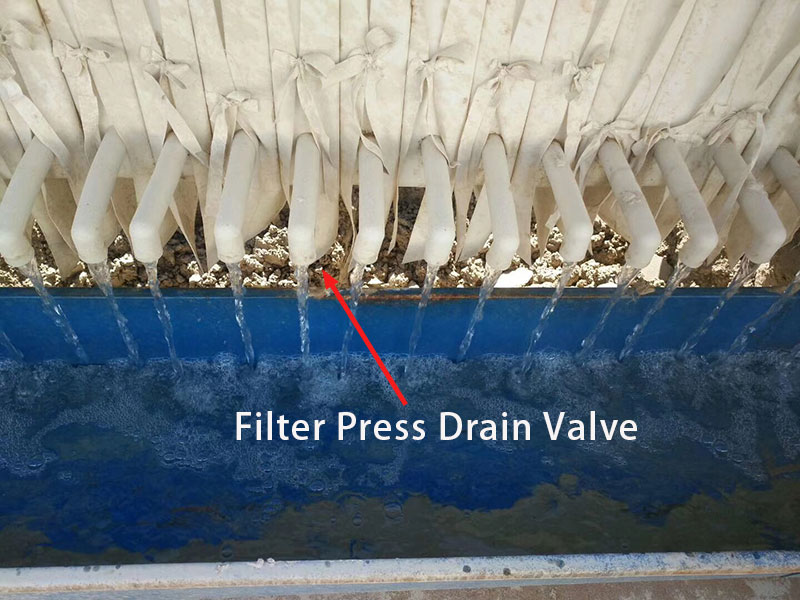
The drain valve can adjust the flow rate of the fluid to ensure smooth discharge of the filtrate and avoid filter cake damage caused by too fast flow rate or low efficiency caused by too slow flow rate. The high-quality drain valve design can effectively prevent liquid leakage and keep the working environment clean and safe. Drain valves are usually made of corrosion-resistant materials (such as stainless steel, ceramics, or special plastics) to adapt to different working environments and chemical liquids. In short, choosing the appropriate drain valve is very critical to improving the performance of the filter press and extending the service life of the equipment.
Filter Press Pressure Gauge
The filter press pressure gauge is a key instrument in the filter press system, used to monitor and control the pressure level during the filtration process. This pressure gauge is essential to ensure the safe and efficient operation of the filter press, as the correct pressure is the basis for achieving optimal filtration results and protecting the equipment from overpressure damage.
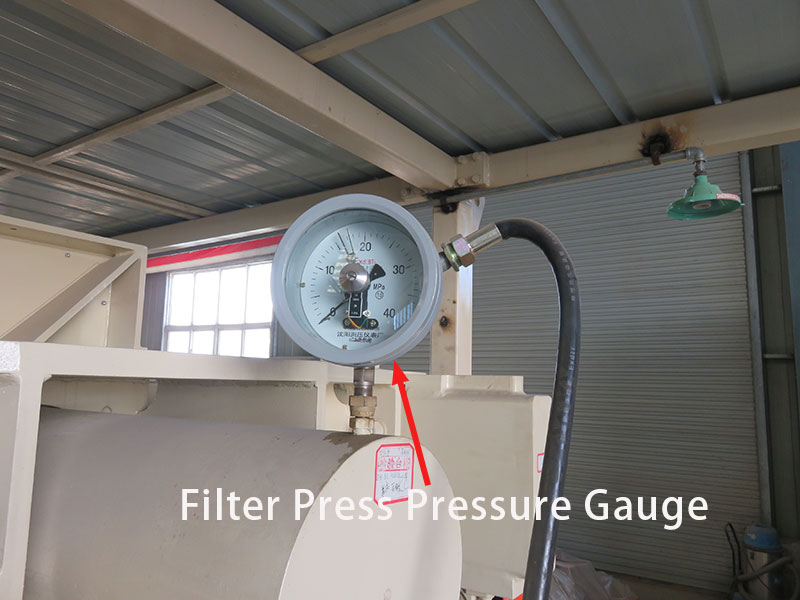
The pressure gauge is installed in a prominent position of the filter press, usually connected to the outlet pipe of the feed pump or the inlet of the filter chamber. The pressure gauge can display the pressure in the filter chamber in real time, helping operators understand the current working status. By monitoring pressure, operators can prevent pressure from exceeding the maximum pressure the machine is designed to withstand, preventing equipment damage or accidents. Appropriate pressure helps form a uniform and dense filter cake, improving filtration efficiency and filter cake quality. There are various types of pressure gauges, and different pressure gauges can be selected depending on the specific needs and type of filter press.
In short, the pressure gauge of the filter press is an indispensable part of the filtration process, and its accuracy directly affects the filtration effect and the safe operation of the equipment. Selecting a suitable pressure gauge and performing proper maintenance play an important role in improving the overall filtration efficiency and extending the service life of the equipment.
Filtrate Collecting Groove
The filtrate collecting groove is one of the key components in the filter press system for collecting and guiding filtrate. During the filtration process, the treated liquid (filtrate) is separated from the filter cake and flows into the sump through the filter cloth. The design and functionality of the filtrate collecting groove are critical to ensure efficient collection and delivery of filtrate to storage or further processing facilities.
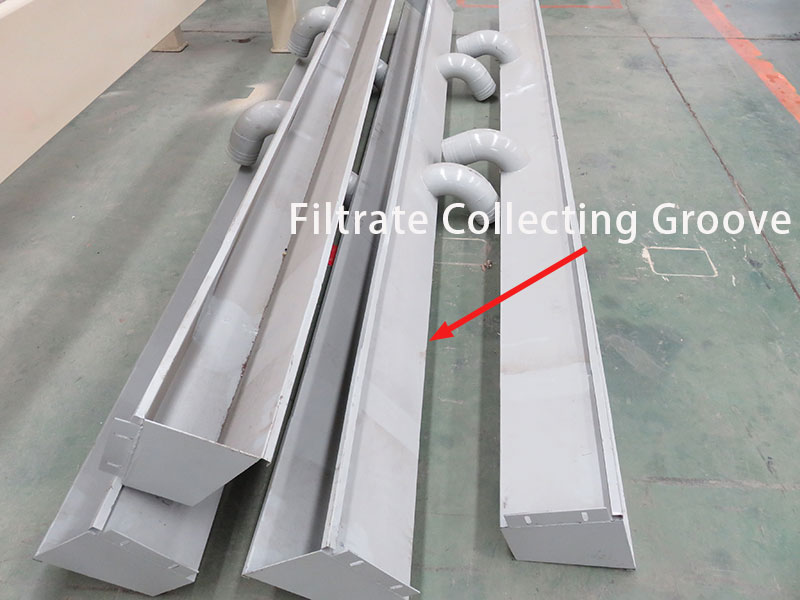
The liquid collection tank is usually located at the bottom of the filter press or under the filter plate. Its main function is to receive the liquid that flows out after filtering through the filter cloth, prevent the filtrate from leaking to the outside of the machine, and ensure a clean and safe working environment. The filtrate collecting groove is designed with a guide structure to effectively guide the filtrate to the outlet pipe or further treatment facilities. Sump tanks are usually made of corrosion-resistant materials, such as stainless steel or specific plastics, to cope with the different chemical properties of the filtrate. The sump should be designed to facilitate cleaning and maintenance to prevent filtrate residue and contamination.
Belt Conveyor
Filter press belt conveyor is an important piece of equipment used for handling and conveying filter cake in various industrial applications. In many industrial production processes, especially in the fields of mining, chemical industry, food processing, and wastewater treatment, filter press belt conveyors play a key role. They are usually configured at the outlet of the filter press and are used to automate and improve the efficiency of solids treatment after filtration.
The main function of the filter press conveyor belt is to receive the filter cake discharged from the filter press and transport it to the next processing link or storage area. These conveyor belts are typically made of durable materials capable of withstanding the weight and possible corrosive nature of the filter cake. Depending on the nature of the application, conveyor belts may be made of rubber, polymers, or specialty synthetic materials to withstand high temperatures or chemical environments. Automatic filter press conveying systems are often equipped with sensors and automatic control systems that can automatically adjust conveying speed and operation according to the productivity of the filter cake.
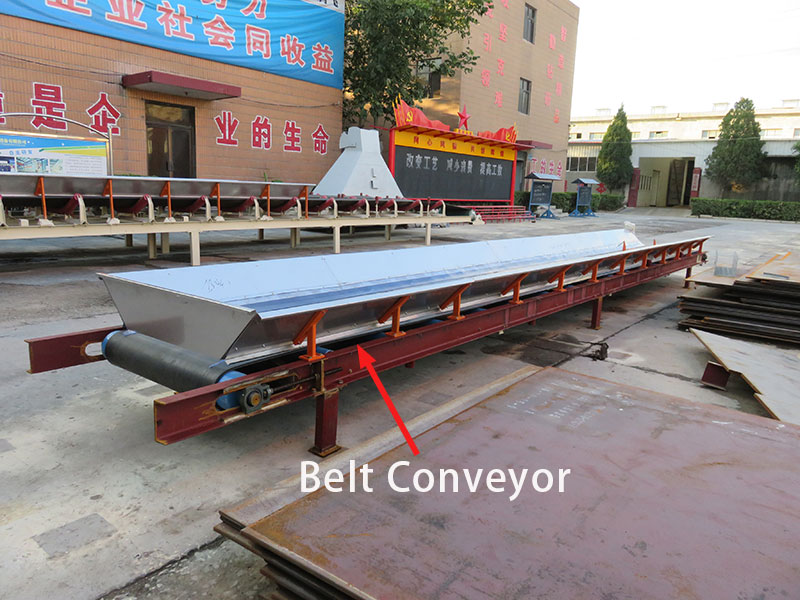
The above accessories are very important accessories for the filter press in addition to the main components such as the filter plate, filter cloth, and metering pump. All of them are indispensable. Together, they form the filter press and have an important impact on the filtration efficiency of the filter press.

